 A sepia-toned album that, above all, creates its own space-time, I wouldn’t normally award points for escapism, but this one manages to bring its historical reference points into a rock ‘n’ roll context, which is the best trick they pull off on this tricky little gem of a record. This is funkier than their debut, and funkier than most albums that attempt to be funky. It’s also a lot squarer than most albums, which is a neat trick for an album so funky. Great production, as well. And fantastic use of horns, evokes ol’ time rural America and ’60s soul in equal measures: another neat trick. Another one of those groups who manage to pull off the on-the-verge-of-falling-apart thing with aplomb. That’s enough praise for this Band. –Will
A sepia-toned album that, above all, creates its own space-time, I wouldn’t normally award points for escapism, but this one manages to bring its historical reference points into a rock ‘n’ roll context, which is the best trick they pull off on this tricky little gem of a record. This is funkier than their debut, and funkier than most albums that attempt to be funky. It’s also a lot squarer than most albums, which is a neat trick for an album so funky. Great production, as well. And fantastic use of horns, evokes ol’ time rural America and ’60s soul in equal measures: another neat trick. Another one of those groups who manage to pull off the on-the-verge-of-falling-apart thing with aplomb. That’s enough praise for this Band. –Will
Rock
Joni Mitchell “Don Juan’s Reckless Daughter” (1977)
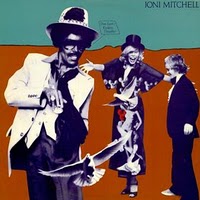 After plowing through the budget bins one weekend, I decided to spend five dollars on five Joni Mitchell albums and see what the hype was all about, and of the five I brought home, “Don Juan’s Reckless Daughter” was the one I found myself going back to. It seems that most of the people who fell in love with the radio-friendly, “pop” Joni thought this one was too random, weird, and abstract. I find it clever, wandering, curious, and self-indulgent in the best way possible. I love the production, super clean and bright, and every so often… When Jaco Pastorius hits those notes… It’s totally rich and full in the low end. But what I love the most is the experimentation on songs like “Paprika Plains” (which eats up a whole album side), and “Dreamland,” (featuring Chaka Khan) which ditches her traditional acoustic guitars for just drums and chants. The title track is my favorite song with it’s explosive bass drops and wandering lyrics. When you think you’ve heard all Joni has to offer, find this one! –Cameron
After plowing through the budget bins one weekend, I decided to spend five dollars on five Joni Mitchell albums and see what the hype was all about, and of the five I brought home, “Don Juan’s Reckless Daughter” was the one I found myself going back to. It seems that most of the people who fell in love with the radio-friendly, “pop” Joni thought this one was too random, weird, and abstract. I find it clever, wandering, curious, and self-indulgent in the best way possible. I love the production, super clean and bright, and every so often… When Jaco Pastorius hits those notes… It’s totally rich and full in the low end. But what I love the most is the experimentation on songs like “Paprika Plains” (which eats up a whole album side), and “Dreamland,” (featuring Chaka Khan) which ditches her traditional acoustic guitars for just drums and chants. The title track is my favorite song with it’s explosive bass drops and wandering lyrics. When you think you’ve heard all Joni has to offer, find this one! –Cameron
Uriah Heep “Uriah Heep” (1970)
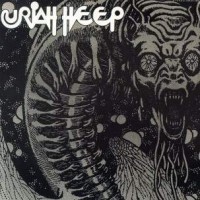
Any time the infamous, heavy-hatin’ thought police at Rolling Stone review an album saying “if this group makes it I’ll have to commit suicide,” you know you’re on to something good, and Uriah Heep’s debut remains a cornerstone of vintage hard rock, delivering a crushing assault that belies its 1970 release date. The bloodthirsty “Gypsy” sets things up with some burning guitar/organ interplay before diving into a Paleolithic riff over which Byron soars with layered vocals. It’s those wild, dramatic harmonies and the band’s authoritative thud that stamps these tunes as something uniquely intense and remarkable – Heep ain’t just the poor man’s Purple, folks! Check out the wild “Bird of Prey,” which predicts Queen with it’s jarring vocals (and kudos to whover swapped this in for the useless “Lucy Blues” from the UK issue), heavy boogie beast “Real Turned On,” and churning entries like “Walking in Your Shadow” and “I’ll Keep on Trying.” The melancholy ballad “Come Away Melinda,” and more involved concept pieces “Dreammare” and “Wake Up” are cool diversions from the mayhem, the band stretching out without losing the plot. Factor in a spacious, detailed production that places you right in the crossfire, and you can hear the metal being forged right inside your aching skull. —Ben
Captain Beyond “Captain Beyond” (1972)
 Psychedelic rock emerging from its Technicolor cocoon as a decidedly more metallic butterfly. This is one of the first metal albums and still one of the best. It runs through a quick half hour of seriously kick-ass riffs and tricky rhythms that would suffice to leave some of us sufficiently breathless were it not also for the stoner imagery and a general atmosphere of stoopid awesomeness that I find transporting—despite myself. Sure, it gets overly dopey towards the end, but most of its listeners are doped up by that point, anyway. Guitar, bass, and drums manna for those of us who like that sort of thing. As for the rest of you… well, who asked you, anyway? Highly recommended late-night listening. –Ben
Psychedelic rock emerging from its Technicolor cocoon as a decidedly more metallic butterfly. This is one of the first metal albums and still one of the best. It runs through a quick half hour of seriously kick-ass riffs and tricky rhythms that would suffice to leave some of us sufficiently breathless were it not also for the stoner imagery and a general atmosphere of stoopid awesomeness that I find transporting—despite myself. Sure, it gets overly dopey towards the end, but most of its listeners are doped up by that point, anyway. Guitar, bass, and drums manna for those of us who like that sort of thing. As for the rest of you… well, who asked you, anyway? Highly recommended late-night listening. –Ben
Roky Erickson and the Aliens “The Evil One” (1981)
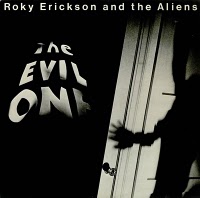 After serving some time in a mental institution, Roky Erickson, gifted vocalist of the prolific psych outfit 13th Floor Elevators, pheonixed into a paranoid messiah of rock, shedding any traces of campiness from his 60’s catalog in the proccess. “The Evil One” is a raging slab of psychedelic punk driven by Roky’s wonderful Texas fried and acid fed voice. He shrieks in terror as if to warn world of the demons in his mind. Although the lyrical subject matter is almost comical; vampires, a two headed dog, the devil, etc…, it’s delivered with a sincerity comparable to Syd Barrett’s solo albums or even a homeless person in the street raving on about something out to get them. But aside from any side stories of mental breakdown or heavy drug intake, the record is a cold cut ripper. Full speed 70’s hard rock with out any filler or forced attitude and killer guitar runs throughout. A must have for rock, punk, or psychellic heads. Just make sure your mind is together before dropping the needle, it might not come back. -Alex
After serving some time in a mental institution, Roky Erickson, gifted vocalist of the prolific psych outfit 13th Floor Elevators, pheonixed into a paranoid messiah of rock, shedding any traces of campiness from his 60’s catalog in the proccess. “The Evil One” is a raging slab of psychedelic punk driven by Roky’s wonderful Texas fried and acid fed voice. He shrieks in terror as if to warn world of the demons in his mind. Although the lyrical subject matter is almost comical; vampires, a two headed dog, the devil, etc…, it’s delivered with a sincerity comparable to Syd Barrett’s solo albums or even a homeless person in the street raving on about something out to get them. But aside from any side stories of mental breakdown or heavy drug intake, the record is a cold cut ripper. Full speed 70’s hard rock with out any filler or forced attitude and killer guitar runs throughout. A must have for rock, punk, or psychellic heads. Just make sure your mind is together before dropping the needle, it might not come back. -Alex
Tubeway Army “Tubeway Army” (1978)
 This is the Gary Numan we know and love, in his infancy. And although this is essentially a more guitar-oriented blueprint for Replicas, its sloppiness and low-rent ambiance give it a creepy feeling and skuzzy attack that makes this album a keeper not only for fans of the man-machine’s two or three subsequent classics, but of early “new wave” in general, before it had its edges smoothed away. Still, the album would have more impact as an EP, as Numan’s limits show themselves not quite equipped for the long player’s haul. Granted, the latter could arguably be said of his two or three subsequent classics, as well. –Will
This is the Gary Numan we know and love, in his infancy. And although this is essentially a more guitar-oriented blueprint for Replicas, its sloppiness and low-rent ambiance give it a creepy feeling and skuzzy attack that makes this album a keeper not only for fans of the man-machine’s two or three subsequent classics, but of early “new wave” in general, before it had its edges smoothed away. Still, the album would have more impact as an EP, as Numan’s limits show themselves not quite equipped for the long player’s haul. Granted, the latter could arguably be said of his two or three subsequent classics, as well. –Will
Queen “Jazz” (1978)
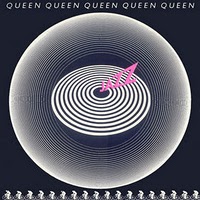 In comparison to much of the Queen back catalogue, this album has been ripped apart, criticised, and sometimes even ridiculed to the point that one begins to believe in the negativity and almost approaches this 1978 release with a view that it is going to stink however hard one tries to judge it objectively. O.K, it doesn’t contain any of the anthemic masterpieces one had become accustomed to. There is no “Bohemian Rhapsody”, “Somebody To Love”, ” We Are The Champions”, or “We Will Rock You”. Yes it does open with one of the most bizarre songs the band would ever record, the pseudo Arabesque “Mustapha”, which must have been a shock to regular fans.Yes one has to agree that their choice to stage an all nude female bicycle race at Wimbledon Racetrack and include a poster of the event with the album was not the most inspired promotonal strategy, particularly when one considers that The Womens Liberation Movement were at that time getting a certain amount of empathy for their vehement stand against Playboy, Miss World, and anything that showed women as objects for masculine amusement. Although the album would be released with the poster in the U.K, both Kmart and Sears in the States refused to handle “Jazz” with the poster, so American fans would only be able to purchase through Mail order. (It sounds like a Spinal Tap scene doesn’t it ?). The American press were particularly scathing, Rolling Stone reviewer Dave Marsh panned “Jazz”, and added “Queen may be the first truly Fascist Rock band”.
In comparison to much of the Queen back catalogue, this album has been ripped apart, criticised, and sometimes even ridiculed to the point that one begins to believe in the negativity and almost approaches this 1978 release with a view that it is going to stink however hard one tries to judge it objectively. O.K, it doesn’t contain any of the anthemic masterpieces one had become accustomed to. There is no “Bohemian Rhapsody”, “Somebody To Love”, ” We Are The Champions”, or “We Will Rock You”. Yes it does open with one of the most bizarre songs the band would ever record, the pseudo Arabesque “Mustapha”, which must have been a shock to regular fans.Yes one has to agree that their choice to stage an all nude female bicycle race at Wimbledon Racetrack and include a poster of the event with the album was not the most inspired promotonal strategy, particularly when one considers that The Womens Liberation Movement were at that time getting a certain amount of empathy for their vehement stand against Playboy, Miss World, and anything that showed women as objects for masculine amusement. Although the album would be released with the poster in the U.K, both Kmart and Sears in the States refused to handle “Jazz” with the poster, so American fans would only be able to purchase through Mail order. (It sounds like a Spinal Tap scene doesn’t it ?). The American press were particularly scathing, Rolling Stone reviewer Dave Marsh panned “Jazz”, and added “Queen may be the first truly Fascist Rock band”.
So..is “Jazz” really that bad ? Quite honestly, no it isn’t , it’s actually a good album. Ostensibly, it is the most diverse Queen album up to that period but much of the material is strong, entertaining, and one gets the impression that the band enjoyed “stretching themselves”, both musically and generically. The fun element of this recording comes through on songs like the macho Rocker “Fat Bottomed Girls”, the magnificent multi tracked Vocal arrangement on “Bicycle Race”, and the double entendre filled “Don’t Stop Me Now”, a whirling soaring Pop/Rock song on speed, and easily the best cut from the album. Freddie’s ballad “Jealousy” is gentle and sweetly performed and works well as does Brian May’s “Leaving Home Ain’t Easy”. The Roger Taylor songs are pretty bad (“Fun It”, clunky Disco Rock) and (“More Of That Jazz”, badly edited reprise music) and the John Deacon song “In Only Seven Days” seems like an act of appeasement so that all the band members can be recognised as song contributors.
“Jazz” really needs to be re-considered as a good album that was dumbed down by a Rock press who really didn’t understand that every top Rock band needs to diversify at some stage in their career, and although this isn’t Queen’s best work, it is at times both fun and entertaining. –Ben H
Bob Dylan “Oh Mercy” (1989)
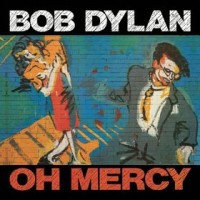
Just when I’d begun to keep my ears open for all the glowing eulogies that were sure to be showered upon the late Mr Dylan’s head, he undergoes a miraculous recovery and produces his finest album of the eighties. I realise that Oh Mercy doesn’t have much competition in that regard but, if I qualify the statement by saying it’s his best since Blood On The Tracks released fifteen years earlier and falls not far short of that pinnacle, I think that puts it into perspective.
Not since the days of Highway 61 Revisited and Blonde On Blonde has Dylan sounded so comfortable fronting a fully fledged band. His voice has the same distinctive croak but sounds richer. Whether that is solely due to the skills of Daniel Lanois in the producer’s chair, I don’t know, but I’m certain a great deal of the credit can be laid at his door. The best songs on Oh Mercy compare favourably with anything in Dylan’s back catalogue. “Ring Them Bells”, “What Was It You Wanted”, “Man In The Long Black Coat” and “Most Of The Time” – a painful telling of not coping with lost love – are all excellent. But, in the end, it’s the negative side of Dylan that this album brings to the fore.
It would be 8 more years before his next great album, Time Out Of Mind, and his insistence in between on releasing second rate material can only be attributed to laziness or a complete disregard for his fans. —Ian
Alice Cooper “Billion Dollar Babies” (1973)
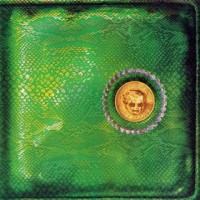
Considering that Alice Cooper’s music was more a soundtrack to his extravagant persona and the sideshow rock and roll theatrics that fans came to love, his early albums still retain a consistent quality as simple stand alone musical experiences. High praise, even if you’re not consumed by the deliberate dark showmanship, the attention grabbing histrionics or the wilful intention to melodramatically shock for the sake of entertainment. Not only did Alice Cooper write strong songs, but they delivered their mix of bombastic heavyweight, glam tinged rock with a knowing pop sensibility and a sense of melody few could compete with. Along with producer Bob Ezrin, and with the powerful dual guitar attack of Glenn Buxton and Michael Bruce, if the band didn’t insult every mother’s heart, they most definitely laid a convincing assault on most kid’s minds.
“Billion Dollar Babies” in many ways is Alice Cooper’s most accessible early work. There’s a more expansive backdrop by the use of a greater range of instrumentation and orchestration. The outstanding opener and worthy cover of the Rolf Kempf original, “Hello Hooray” casts Cooper as the Master Of Ceremonies for every rebellious adolescent searching for thrills with “I’ve been ready, ready as this audience that’s coming here to dream, Loving every second, every moment, every scream”. It lays the foundation for one of the band’s greatest songs, “Elected”, a re-work of a song originally titled “Reflected” from the 1969 “Pretties For You” album. The surging riff that guides the chorus is a revelation in comparison to the original, as Cooper announces himself as the leader of a generation in the simplest terms “Kids want a saviour and don’t need a fake, I wanna be elected”. Much of the remainder of the album perfectly matches Cooper’s ethics to self effacing comedy, manic bravado, and high octane entertainment. There are over egged moments, as in the funereal drawl of “Sick Things”, and the ill fitting polished pop overtones of “No More Mr Nice Guy”, but these slips are overcome by the excellent title track, “Raped And Freezin’”, “Generation Landslide” and the gentle piano ballad “Mary Ann”.
In terms of musical legacy and quality there’s little to choose between 1971s “Love It To Death”, “Killer”, 1972s “School’s Out” and this recording. For a new recruit to Alice Cooper’s wild and wicked world, starting with “Billion Dollar Babies” is the key to enter his dungeon of darkness. —Ben
Sweet “Sweet Fanny Adams” (1974)
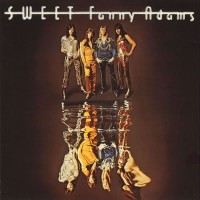
One helium-fueled sugar rush of an album, Sweet’s “Sweet Fanny Adams” cuts a glitter-littered path with sky-high vocals, proto-metal guitar crunch, and a set of mesmerizing tunes that find the band splitting writing duties with the Chinnichap bubblegum factory. Sweet seem determined to give their teenybopper image the boot with a series of snarling, bad-attitude rockers like the frantic “Set Me Free,” indignant “No You Don’t,” and the defiant buzz of “Sweet F.A.” lending to the albums aggressive tone, along with glitzy fare like “Heartbreak Today’ and the switch-hitting “AC/DC.” –Ben
Paul McCartney “McCartney” (1970)
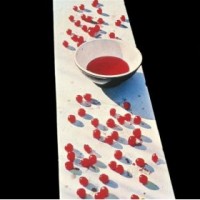
A critical dissection will reveal that there’s quite a bit of filler. Yet somehow, taken as a whole, it proves to perfectly capture a mood: an honest snapshot of a place and time. “Maybe I’m Amazed” and “Every Night” are the obvious top choices and “Junk” is an essential McCartney composition. Sifting through the rest is like combing through a great assortment of rags and bones. The instrumentals all have wonderful grooves and there’s really not a bad track on either side. Certainly many of the songs would benefit from a good fleshing out and the album as a whole feels like a set of demos. A set of outstandingly performed demos, that is. It was the perfect album for him to make after the dissolution of The Beatles – imagine the pressure of following not only Abbey Road, but the Beatles as an act! It’s the sound of Paul laying it all out there and subliminally saying “hey, this is what I can do, hope you dig it…if not, I’m not shoving it in your face that I was a Beatle” – a feeling not too far away, but not as severe as John’s “I don’t believe in Beatles”. Where John may have felt emboldened by the break-up and therefore took an extreme approach to his first couple of post-Beatles albums, Paul came out of the box seeming a bit amputated and searching for his sea legs. It’s that emotional honesty that I hear on this album that gives it it’s charm. –BH
Dead Wrong: A Non-Deadhead’s Guide
to the Grateful Dead’s Studio Albums
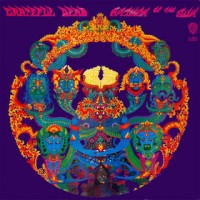
There are very few bands as polarizing as the Grateful Dead, but even their most rabid fans and harshest detractors can agree on one point: The band personified a type of relationship a band can have with its audience. It’s now a model that many bands — especially those of the “jam band” variety — emulate and strive for, and one that is almost taken for granted in today’s fragmented music-consumer culture. It’s easy to forget just how pervasive the Deadhead phenomenon was, especially when it peaked during the final years of the Dead’s active existence. But all parties must come to an end, and when the Grateful Dead (wisely) decided to call it quits after Jerry Garcia’s sad but unsurprising death in 1995, the coliseum and stadium parking lots emptied out, and many Deadheads moved on.
Looking back on this era, it’s clear now that the Dead’s cultural impact often eclipsed their actual music. But as the shows become fading memories for those who experienced them and as a new generation of listeners discover the Grateful Dead, the focus is returning to the band’s rich musical history — where it belongs. Often brilliant, usually at least interesting, and only rarely unlistenable, the Grateful Dead weren’t afraid to take chances, and they adapted to changing times and environments while compromising very little for either. It’s a well-worn cliche that the Dead’s strength was as a live-performance unit. Indeed, a hardcore Deadhead can likely recite the set-list, verbatim, from the second set of a 1987 Alpine Valley show, but if you ask him if the original “Fire on the Mountain” is on Terrapin Station or Shakedown Street, you’re likely to be met with a blank stare.
In many ways, this preference for the live Dead is warranted, but it’s not always justified. The Dead’s natural habitat was onstage, for sure, but even during their best years (late ’60s and early ’70s), their exploratory jams did not always take flight, and they could be sloppy and meandering just as easily as they could be virtuosic and transcendental. Sometimes the controlled environment of the recording studio helped the Dead reign in some of their more excessive tendencies and focus their creative energies into making more cohesive musical statements. The end results of these endeavors varied widely in quality, especially during their later years. And there is certainly no avoiding the fact that the band suffered a critical blow in 1972 with the loss of lead vocalist/organist Ron “Pigpen” McKernan, who brought and took with him an irreplaceable rawness and blues authenticity. Still, most of the Dead’s studio output from all stages of their storied career is at least worth a listen. And now, revisiting their catalog, it’s clear that some of it can even be called essential. So here, for newcomers to the band (or old-timers wishing to explore the more neglected areas of their work), is a short list of some of the Dead’s more notable attempts at conquering the studio LP format, warts and all.
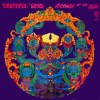 1. Anthem of the Sun (1967) Many fans of ’60s garage rock (this writer included) love the Dead’s raw and hyperactive debut LP (read our review), but devotees of hardcore 60’s psych will take to this follow-up even more. Melding snippets of live performances to effects-heavy studio-recorded material, the band weaves a sonic tapestry that is at once puzzling and mystical. While some slow bits occasionally threaten to bog things down, this early artistic triumph shows the studio Dead at their most adventurous.
1. Anthem of the Sun (1967) Many fans of ’60s garage rock (this writer included) love the Dead’s raw and hyperactive debut LP (read our review), but devotees of hardcore 60’s psych will take to this follow-up even more. Melding snippets of live performances to effects-heavy studio-recorded material, the band weaves a sonic tapestry that is at once puzzling and mystical. While some slow bits occasionally threaten to bog things down, this early artistic triumph shows the studio Dead at their most adventurous.
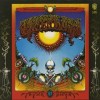 2. Aoxomoxoa (1969) Originally to be titled, “Earthquake Country”, this is the Dead’s most atmospheric record. Folksy, quiet, and dark, its songs are subtle and sometimes don’t even seem like songs at all, more like stream-of-consciousness sound poems. On shaky ground with the rest of the band during the recording sessions, Pigpen and Bob Weir’s presence is minimal, making this mostly Garcia’s show. Still, his creaky vocals, coupled with Robert Hunter’s surrealistic lyrics, make for a record that is wonderfully creepy and bizarre.
2. Aoxomoxoa (1969) Originally to be titled, “Earthquake Country”, this is the Dead’s most atmospheric record. Folksy, quiet, and dark, its songs are subtle and sometimes don’t even seem like songs at all, more like stream-of-consciousness sound poems. On shaky ground with the rest of the band during the recording sessions, Pigpen and Bob Weir’s presence is minimal, making this mostly Garcia’s show. Still, his creaky vocals, coupled with Robert Hunter’s surrealistic lyrics, make for a record that is wonderfully creepy and bizarre.
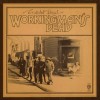 3. Workingman’s Dead (1970) This is the first release in a pair of career and genre-defining country rock albums. For many, its follow-up, American Beauty, is the best studio album the Dead ever recorded. But most of these folks would agree that Workingman’s Dead comes in a very close second. Possessing a slightly grittier sound than the more polished American Beauty, every track here is a winner. Some of the band’s most popular songs such as “Uncle John’s Band” and “Casey Jones” are here, but it’s the less overplayed tracks that make it one of the greats. Among these fine moments are “New Speedway Boogie”, a commentary on the fateful Altamont music festival (where the band shared billing with the Rolling Stones) and “Easy Wind,” a showcase for Pigpen, who seizes the opportunity to make the most soulful five minutes to be heard on any Grateful Dead studio album.
3. Workingman’s Dead (1970) This is the first release in a pair of career and genre-defining country rock albums. For many, its follow-up, American Beauty, is the best studio album the Dead ever recorded. But most of these folks would agree that Workingman’s Dead comes in a very close second. Possessing a slightly grittier sound than the more polished American Beauty, every track here is a winner. Some of the band’s most popular songs such as “Uncle John’s Band” and “Casey Jones” are here, but it’s the less overplayed tracks that make it one of the greats. Among these fine moments are “New Speedway Boogie”, a commentary on the fateful Altamont music festival (where the band shared billing with the Rolling Stones) and “Easy Wind,” a showcase for Pigpen, who seizes the opportunity to make the most soulful five minutes to be heard on any Grateful Dead studio album.
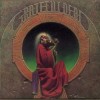 4. Blues for Allah (1975) The Dead released three studio albums on their short-lived record label in the mid-70s: Wake of the Flood, From the Mars Hotel, and this one. All entries in this “Grateful Dead Records Trilogy” show the band’s growing jazz and fusion influences, and Blues for Allah represents the culmination of this productive experimentation. The Dead had been on hiatus a year before the LP’s recording sessions began, and this seems to have done them a world of good. Pigpen is long gone at this point, but keyboardist Keith Godcheaux is on fire and contributes some of the best work he’s done since joining the band. (And thankfully, the presence of his wife/backing-vocalist, the much maligned Donna, is kept to a minimum.) Featuring the “Help on the Way-Slipknot-Franklin’s Tower” song cycle, a live staple for the rest of the Dead’s career, this is the closest the Dead ever came to bottling their onstage lightning.
4. Blues for Allah (1975) The Dead released three studio albums on their short-lived record label in the mid-70s: Wake of the Flood, From the Mars Hotel, and this one. All entries in this “Grateful Dead Records Trilogy” show the band’s growing jazz and fusion influences, and Blues for Allah represents the culmination of this productive experimentation. The Dead had been on hiatus a year before the LP’s recording sessions began, and this seems to have done them a world of good. Pigpen is long gone at this point, but keyboardist Keith Godcheaux is on fire and contributes some of the best work he’s done since joining the band. (And thankfully, the presence of his wife/backing-vocalist, the much maligned Donna, is kept to a minimum.) Featuring the “Help on the Way-Slipknot-Franklin’s Tower” song cycle, a live staple for the rest of the Dead’s career, this is the closest the Dead ever came to bottling their onstage lightning.
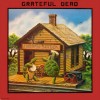 5. Terrapin Station (1977) In the late ’70s, the Dead signed with Arista Records, and the label would release the remainder of the band’s studio output during the band’s active existence. Many of these records are riddled with half-baked ideas, unsuccessful attempts at then in-vogue musical styles, and dated production values. Terrapin Station is certainly not immune to these pitfalls, but there’s something very interesting about watching a band, one who for many years avoided the usual machinations of the music industry, try to reinvent themselves as an FM-friendly arena rock act. Even more interesting is the fact that here the Dead sometimes threaten to pull this off! Though dated and overproduced, Terrapin Station is probably the band’s strongest later studio effort, and it still retains a certain charm. Unfortunately, the same cannot be said about the two records that came after it, Shakedown Street and Go to Heaven.
5. Terrapin Station (1977) In the late ’70s, the Dead signed with Arista Records, and the label would release the remainder of the band’s studio output during the band’s active existence. Many of these records are riddled with half-baked ideas, unsuccessful attempts at then in-vogue musical styles, and dated production values. Terrapin Station is certainly not immune to these pitfalls, but there’s something very interesting about watching a band, one who for many years avoided the usual machinations of the music industry, try to reinvent themselves as an FM-friendly arena rock act. Even more interesting is the fact that here the Dead sometimes threaten to pull this off! Though dated and overproduced, Terrapin Station is probably the band’s strongest later studio effort, and it still retains a certain charm. Unfortunately, the same cannot be said about the two records that came after it, Shakedown Street and Go to Heaven.
Further listening: Ironically, the Dead had their biggest commercial success with 1987’s In the Dark, long after their creative peak. Though its hit single, “Touch of Grey”, made the band more popular than ever, many early adopters despised the album. To be fair, it did represent a return to form as far as songwriting was concerned, but its production values keep it eternally trapped in the ’80s. If you must hear the Dead’s studio work of this era, it might be worth a listen. But a better route to take is one that stops by the many wonderful solo efforts of the Dead’s individual members. Jerry Garcia’s first LP, 1972’s Garcia (read our review), easily holds its own alongside the Dead’s best work. Percussionist Mickey Hart also recorded some great stuff, and his first album, Rolling Thunder, featuring a star-studded lineup of musicians and vocalists, is a must hear! —Richard P
Did we leave out your favorite Grateful Dead or Dead-related solo LP? We’d love to hear your comments:


